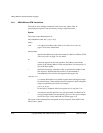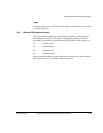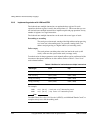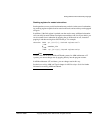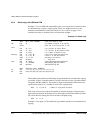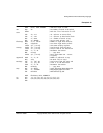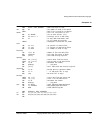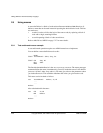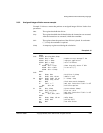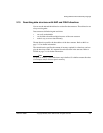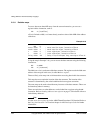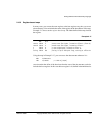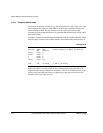
Writing ARM and Thumb Assembly Language
2-48 Copyright © 2000, 2001 ARM Limited. All rights reserved. ARM DUI 0068B
2.9 Using macros
A macro definition is a block of code enclosed between
MACRO
and
MEND
directives. It
defines a name that can be used instead of repeating the whole block of code. This has
two main uses:
• to make it easier to follow the logic of the source code, by replacing a block of
code with a single, meaningful name
• to avoid repeating a block of code several times.
Refer to MACRO and MEND on page 7-27 for more details.
2.9.1 Test-and-branch macro example
A test-and-branch operation requires two ARM instructions to implement.
You can define a macro definition such as this:
MACRO
$label TestAndBranch $dest, $reg, $cc
$label CMP $reg, #0
B$cc $dest
MEND
The line after the
MACRO
directive is the macro prototype statement. The macro prototype
statement defines the name (
TestAndBranch
) you use to invoke the macro. It also defines
parameters (
$label
,
$dest
,
$reg
, and
$cc
). You must give values to the parameters when
you invoke the macro. The assembler substitutes the values you give into the code.
This macro can be invoked as follows:
test TestAndBranch NonZero, r0, NE
...
...
NonZero
After substitution this becomes:
test CMP r0, #0
BNE NonZero
...
...
NonZero



